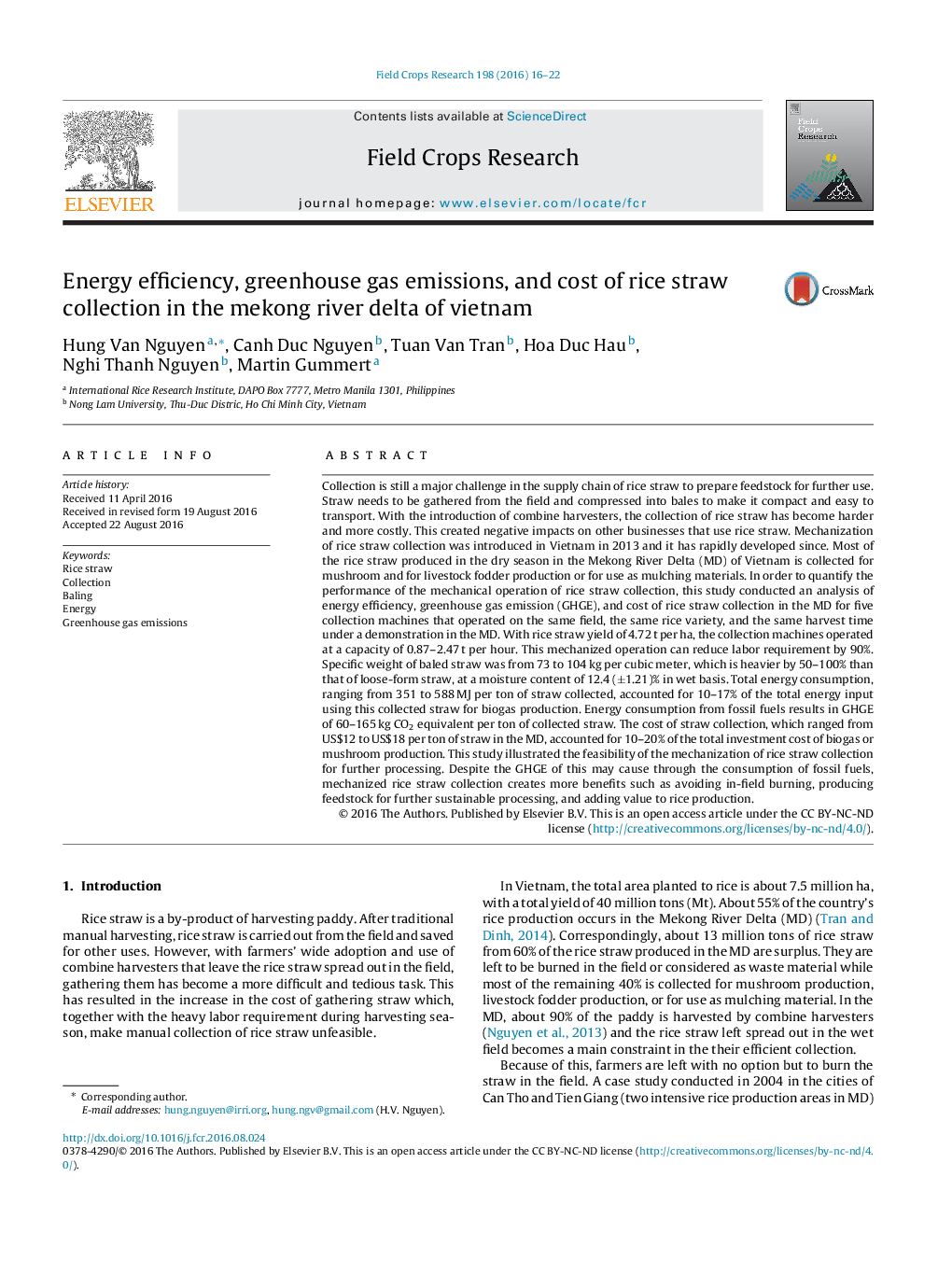| کد مقاله | کد نشریه | سال انتشار | مقاله انگلیسی | نسخه تمام متن |
|---|---|---|---|---|
| 6374381 | 1624665 | 2016 | 7 صفحه PDF | دانلود رایگان |
عنوان انگلیسی مقاله ISI
Energy efficiency, greenhouse gas emissions, and cost of rice straw collection in the mekong river delta of vietnam
ترجمه فارسی عنوان
بهره وری انرژی، انتشار گازهای گلخانه ای، و هزینه جمع آوری کاه برنج در دلتای رودخانه مکتون ویتنام
دانلود مقاله + سفارش ترجمه
دانلود مقاله ISI انگلیسی
رایگان برای ایرانیان
کلمات کلیدی
نی نی مجموعه، بالنگ انرژی، انتشار گازهای گلخانه ای،
موضوعات مرتبط
علوم زیستی و بیوفناوری
علوم کشاورزی و بیولوژیک
علوم زراعت و اصلاح نباتات
چکیده انگلیسی
Collection is still a major challenge in the supply chain of rice straw to prepare feedstock for further use. Straw needs to be gathered from the field and compressed into bales to make it compact and easy to transport. With the introduction of combine harvesters, the collection of rice straw has become harder and more costly. This created negative impacts on other businesses that use rice straw. Mechanization of rice straw collection was introduced in Vietnam in 2013 and it has rapidly developed since. Most of the rice straw produced in the dry season in the Mekong River Delta (MD) of Vietnam is collected for mushroom and for livestock fodder production or for use as mulching materials. In order to quantify the performance of the mechanical operation of rice straw collection, this study conducted an analysis of energy efficiency, greenhouse gas emission (GHGE), and cost of rice straw collection in the MD for five collection machines that operated on the same field, the same rice variety, and the same harvest time under a demonstration in the MD. With rice straw yield of 4.72 t per ha, the collection machines operated at a capacity of 0.87-2.47 t per hour. This mechanized operation can reduce labor requirement by 90%. Specific weight of baled straw was from 73 to 104 kg per cubic meter, which is heavier by 50-100% than that of loose-form straw, at a moisture content of 12.4 (±1.21)% in wet basis. Total energy consumption, ranging from 351 to 588 MJ per ton of straw collected, accounted for 10-17% of the total energy input using this collected straw for biogas production. Energy consumption from fossil fuels results in GHGE of 60-165 kg CO2 equivalent per ton of collected straw. The cost of straw collection, which ranged from US$12 to US$18 per ton of straw in the MD, accounted for 10-20% of the total investment cost of biogas or mushroom production. This study illustrated the feasibility of the mechanization of rice straw collection for further processing. Despite the GHGE of this may cause through the consumption of fossil fuels, mechanized rice straw collection creates more benefits such as avoiding in-field burning, producing feedstock for further sustainable processing, and adding value to rice production.
ناشر
Database: Elsevier - ScienceDirect (ساینس دایرکت)
Journal: Field Crops Research - Volume 198, November 2016, Pages 16-22
Journal: Field Crops Research - Volume 198, November 2016, Pages 16-22
نویسندگان
Hung Van Nguyen, Canh Duc Nguyen, Tuan Van Tran, Hoa Duc Hau, Nghi Thanh Nguyen, Martin Gummert,
